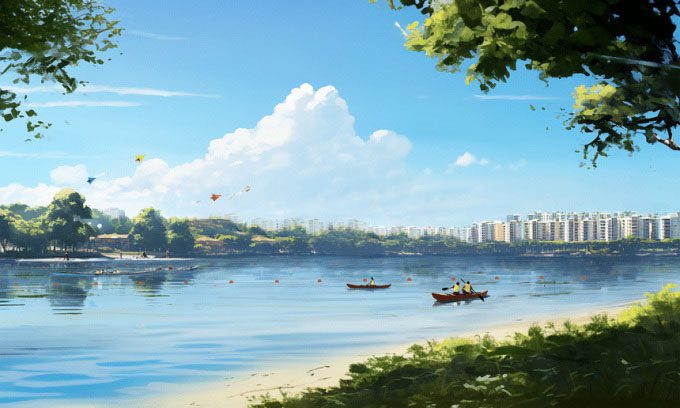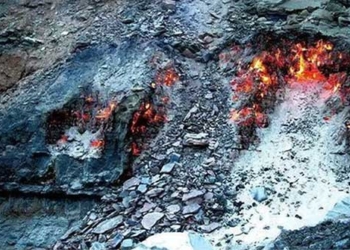Singapore is considering the construction of artificial islands off its eastern coast to protect low-lying areas from rising sea levels due to climate change.
Studies on the engineering and environmental impact of the “Long Island” artificial island project will commence in 2024 and are expected to be completed within five years, according to Singapore’s Minister for National Development Desmond Lee, who made the announcement on November 28. The total area of reclaimed land in the project could reach up to 800 hectares, providing the country with additional space for housing, parks, and industries.

Simulation of the view from East Coast Park towards Long Island. (Photo: URA).
In 2019, Singapore’s Prime Minister Lee Hsien Loong warned that rising sea levels pose a serious threat to Singapore and that coastal protection measures could cost around $75 billion or more over the next 100 years.
The Urban Redevelopment Authority (URA) is currently seeking public feedback on Long Island—a project that may take several decades to develop. On its website, the URA stated that the artificial islands could be built higher than the inland areas, forming a “defensive line” against rising sea levels.
Government agencies have previously considered constructing a 3-meter-high sea wall along the entire coastline, supported by tidal gates and pumping stations. According to Lee, while the wall is technically feasible, it is not ideal for East Coast Park, as many areas of the park would have to be closed for extended periods during its construction. If completed, the wall would also obstruct public access to the coastline for recreational and sporting purposes. Additionally, the pumping stations would occupy an area equivalent to 15 football fields within the park.
According to Adam Switzer, a professor at the Asian Environment School at Nanyang Technological University, extensive research is needed on Long Island, including assessing the project’s impact on coastal currents and the seabed. “We need to carefully consider the potential impacts on both the natural and built environments,” Switzer stated.
However, Switzer also noted that Singapore has experience in large-scale land reclamation, as seen in projects like Changi Airport, the Marina Bay financial district, and Tuas Port. Koh Chan Ghee, a professor of environmental and civil engineering at the National University of Singapore, emphasized that natural solutions such as mangroves, seagrass meadows, and coral reefs should also be implemented.





















































